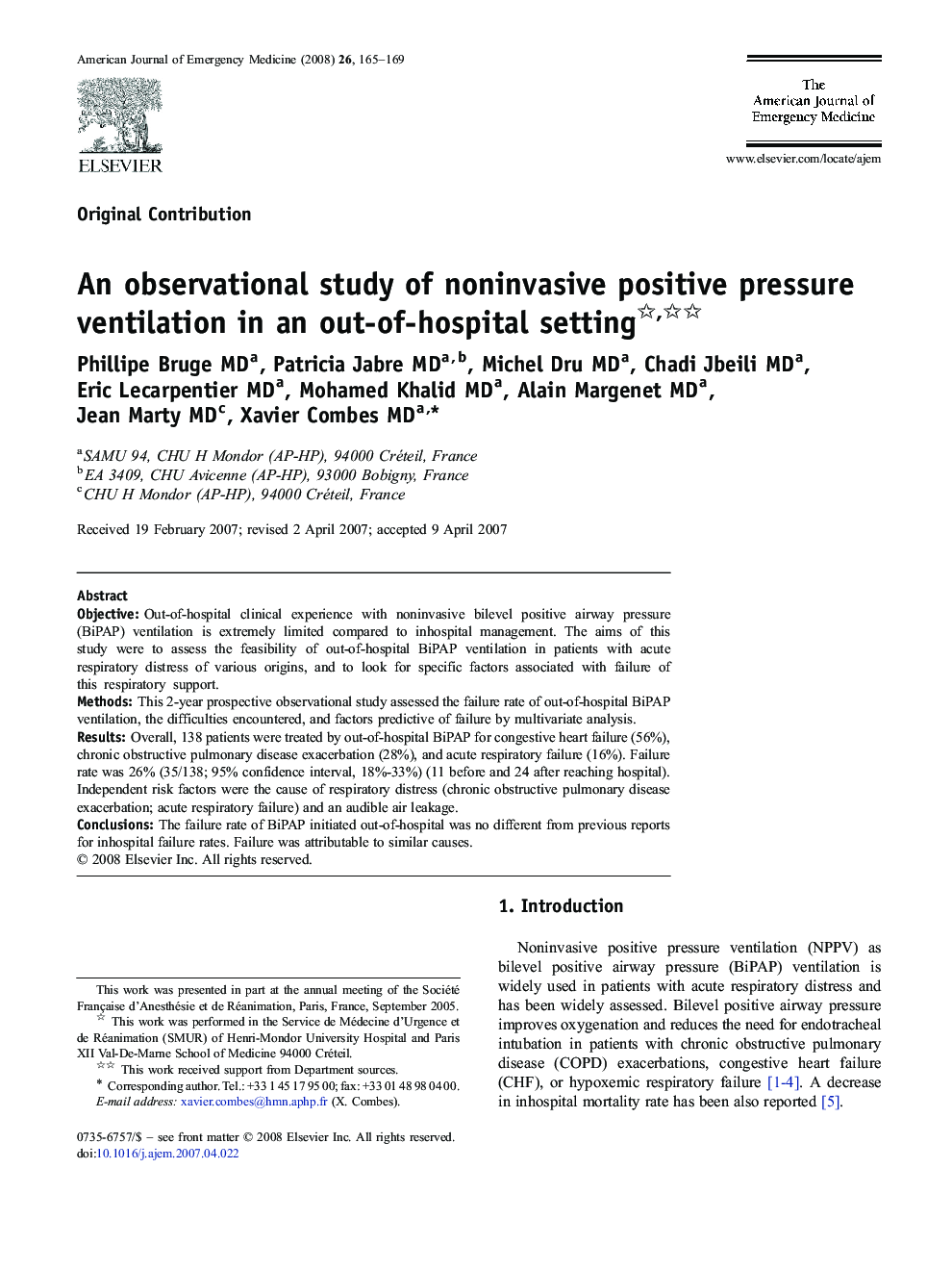| Article ID | Journal | Published Year | Pages | File Type |
|---|---|---|---|---|
| 3227782 | The American Journal of Emergency Medicine | 2008 | 5 Pages |
ObjectiveOut-of-hospital clinical experience with noninvasive bilevel positive airway pressure (BiPAP) ventilation is extremely limited compared to inhospital management. The aims of this study were to assess the feasibility of out-of-hospital BiPAP ventilation in patients with acute respiratory distress of various origins, and to look for specific factors associated with failure of this respiratory support.MethodsThis 2-year prospective observational study assessed the failure rate of out-of-hospital BiPAP ventilation, the difficulties encountered, and factors predictive of failure by multivariate analysis.ResultsOverall, 138 patients were treated by out-of-hospital BiPAP for congestive heart failure (56%), chronic obstructive pulmonary disease exacerbation (28%), and acute respiratory failure (16%). Failure rate was 26% (35/138; 95% confidence interval, 18%-33%) (11 before and 24 after reaching hospital). Independent risk factors were the cause of respiratory distress (chronic obstructive pulmonary disease exacerbation; acute respiratory failure) and an audible air leakage.ConclusionsThe failure rate of BiPAP initiated out-of-hospital was no different from previous reports for inhospital failure rates. Failure was attributable to similar causes.
